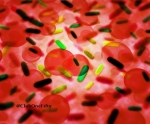 Being overweight or obese is associated with several risks such as developing type 2 diabetes, high blood pressure, cardiovascular disease, cancer, and even mortality. Despite these well documented risks federal statistics indicate that obesity in America has increased from 35% in 2007-08 to being 40% in 2015-16 and that number is still climbing.
Being overweight or obese is associated with several risks such as developing type 2 diabetes, high blood pressure, cardiovascular disease, cancer, and even mortality. Despite these well documented risks federal statistics indicate that obesity in America has increased from 35% in 2007-08 to being 40% in 2015-16 and that number is still climbing.
Weight loss doesn’t have to be unsustainable and an unachievable dream, research is showing that self tracking methods such as an app or diary are the most effective ways to successfully lose weight. Some may feel that self tracking is time consuming, but research from the University of Vermont has found that it can be quick and easy, taking about 15 minutes a day.
As published in the journal Obesity results were examined from 142 self tracking participants. The most successful participants spent on average 14.6 minutes per day online based on their logged in activity in the behavioral weight loss program in which they recorded calories, fat, portion sizes, and preparation methods for all food and beverages consumed; and met weekly for 14 weeks in an online group session with a trained dietician.
The most successful dieters were determined to be those that lost at least 10% of their body weight, who spent 23.2 minutes a day logged in for the first 6 months, then on average 14.6 minutes logged in afterwards. Successfulness was not revolved around how much time was spent logged in, rather it was the number of times they logged in to report what they ate.
“Those who self-monitored three or more times per day, and were consistent day after day, were the most successful,” explained lead author Jean Harvey, chair of the Nutrition and Food Sciences Department at the University of Vermont. “It seems to be the act of self-monitoring itself that makes the difference — not the time spent or the details included.”
The key to weight loss success may well be to start a food journal or download a self monitoring app in which to briefly, but no less than 3 times a day report the details of the food and beverages which have been consumed.
Check the full story.
Source: WorldHealth.net





